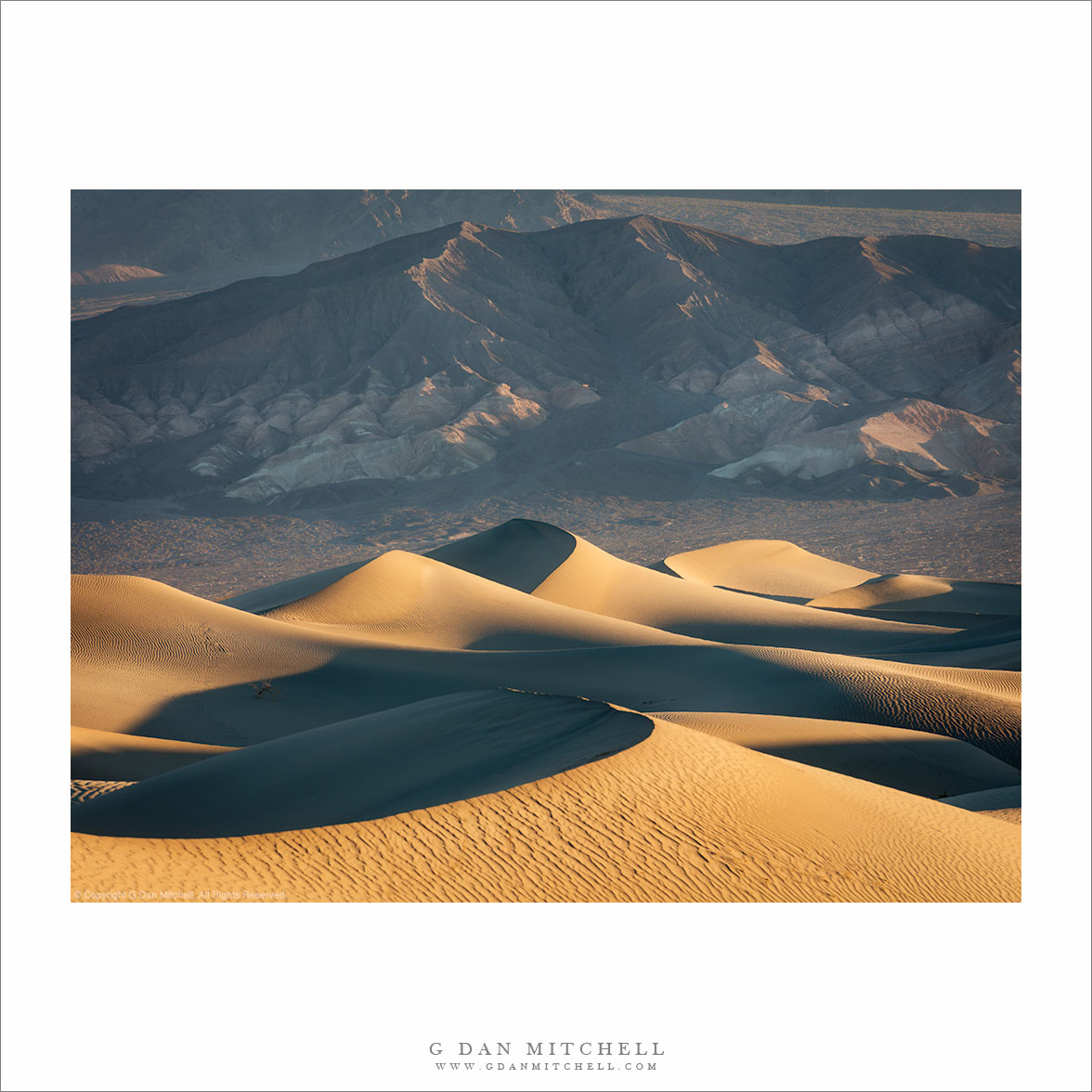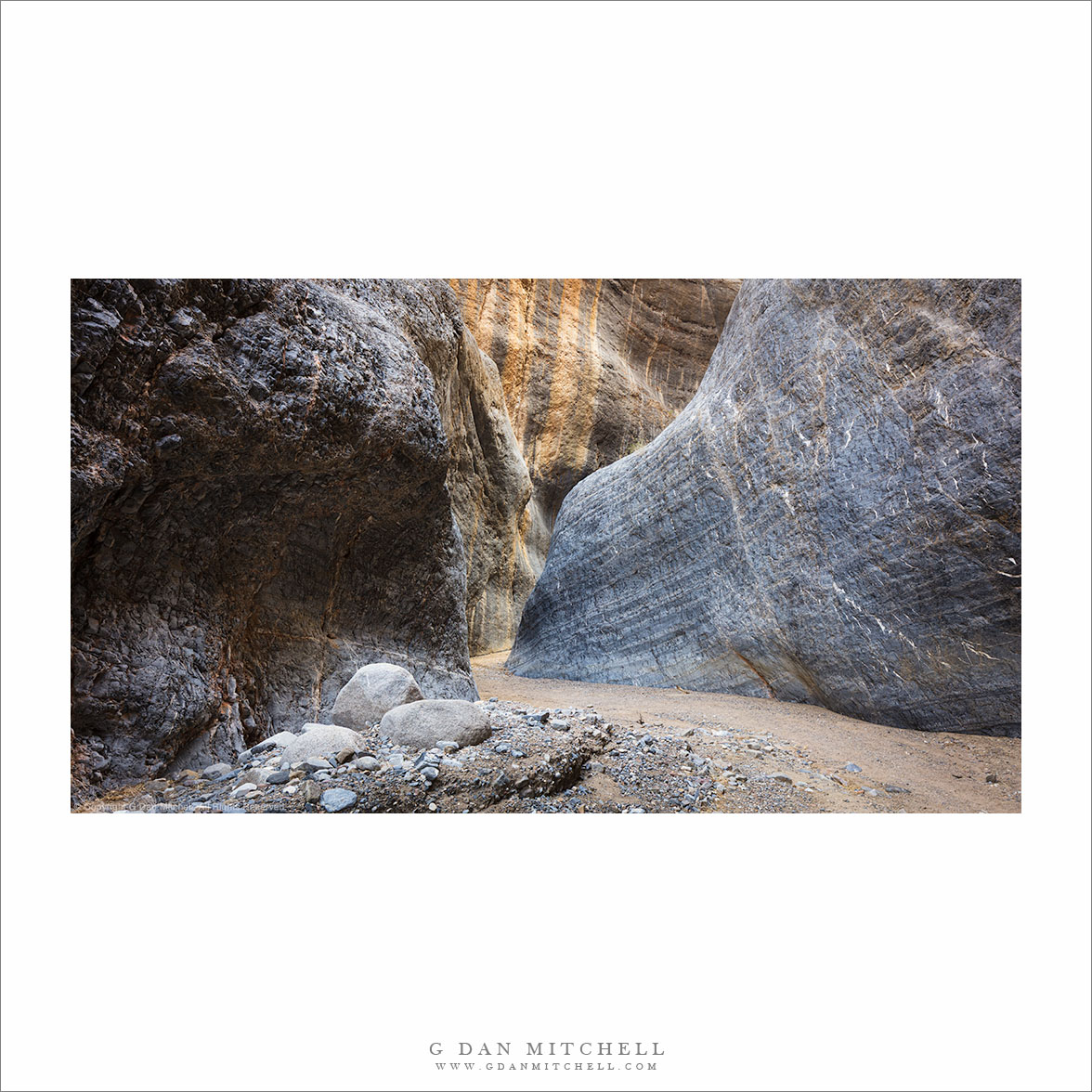
Sand dunes were the primary attraction when I first visited Death Valley a couple of decades ago. They are visual icons of the place, and any new visitor would want to see them. For me, a person whose wilderness experience had been almost exclusively focused on the High Sierra, the dunes were exotic and new. Over time I discovered that there is a much more to this place, and the dunes are no longer at the top of my list of Death Valley destinations. Yet, I can’t let a trip go by without at least a brief visit.
This time my hour of dune photography was a prelude to other activities. I got up in darkness so that I could in position a half hour before sunrise. There is no denying that morning light in the dunes can be spectacular. After all these years, I’m still caught off guard by how quickly the dunes go from pre-dawn soft shadows to morning light and by the short period of extremely saturated colors right around sunrise. I photographed for perhaps 45 minutes, then hiked back to my car and headed to my real target for the day.
G Dan Mitchell is a California photographer and visual opportunist. His book, “California’s Fall Color: A Photographer’s Guide to Autumn in the Sierra” (Heyday Books) is available directly from him.
G Dan Mitchell: Blog | Bluesky | Mastodon | Substack Notes | Flickr | Email
All media © Copyright G Dan Mitchell and others as indicated. Any use requires advance permission from G Dan Mitchell.



